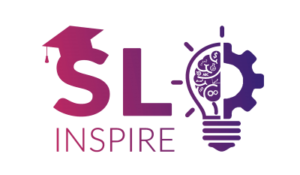[vc_row][vc_column][vc_column_text]Sri Lanka’s education structure is divided into five parts: primary, junior secondary, senior secondary, collegiate, and tertiary. Primary education spans from kindergarten to grade 5 and at the end of this period, the students may elect to write a national exam called the Scholarship exam. This exam allows students with exceptional skills to move on to better schools. After primary education, the junior secondary level lasts for 4 years (Grades 6-9) followed by 2 years (Grades 10-11) of the senior secondary level which is the preparation for the Ordinary Level (O/L) exam.[/vc_column_text][vc_column_text]According to the Sri Lankan law, it is compulsory that all children go to school till grade 9 (age 14) at which point they can choose to continue their education or drop out and engage in apprenticeship for a job. However, the Ministry of Education strongly advises all students to continue with their studies at least until the O/Ls. Students who are pursuing tertiary education must pass the O/Ls in order to enter the collegiate level to study for another 2 years (grades 12-13) to sit for the Advanced Level (A/L) exam, which is also the university entrance exam. On successful completion of this exam, students can move on to tertiary education. Due to the variety of ethnic groups in Sri Lanka, many schools teach only in either Sinhala medium or in Tamil medium and not the English medium. The elite colleges in major cities such as Colombo and Kandy, teach in all three media.[/vc_column_text][vc_single_image image=”1559″ img_size=”large” alignment=”center”][/vc_column][/vc_row][vc_row][vc_column width=”5/12″][vc_single_image image=”1558″ img_size=”large” alignment=”center”][/vc_column][vc_column width=”7/12″][vc_column_text]Sri Lanka boasts with the highest reported youth literacy rate in South Asia at 98.77%. The credit primarily goes to the well-established primary education system. However, going beyond the primary level, the stats are far from being impressive. Education in government schools and universities is completely free. Yet, this is a luxury very few students facing the university entrance exam can experience at the tertiary level. Out of all the students who faced the A/Ls in 2017, 61% were eligible for university admission. However, only 19.7% of them were admitted to universities. This accounts for only 12% of all students facing the university entrance exam entering government universities (this includes all streams. Not only STEM), which makes secondary education and especially, the A/L exam highly competitive. Therefore, students in underserved communities face significant challenges in tertiary education as well as employment.
Through SLInspire, we strive to provide equal access to quality education to all student communities in Sri Lanka. To achieve that, SLInspire provides online educational resources that are critical to assist your journey through A/Ls and beyond.
Read how SLInspire can help you in your journey through secondary and tertiary education.
All statistics were taken from Sri Lanka School Census Report 2017 and Sri Lanka University Statistics 2017 published by the Ministry of Education and the University Grants Commission, Sri Lanka.[/vc_column_text][/vc_column][/vc_row]

